 The 4th Chinese National Pole Dance Championship held in Tianjin
The 4th Chinese National Pole Dance Championship held in Tianjin
 Chinese navy commandos debut at 2014 RIMPAC
Chinese navy commandos debut at 2014 RIMPAC
 Guangxi impression: scenic countryside
Guangxi impression: scenic countryside
 World's largest aquatic insect found in Sichuan
World's largest aquatic insect found in Sichuan
 Ceremony volunteers for Youth Olympics make public appearance
Ceremony volunteers for Youth Olympics make public appearance
 A glimpse of female crew of Liaoning aircraft carrier
A glimpse of female crew of Liaoning aircraft carrier
 Stills from "Dad, where are we going?"
Stills from "Dad, where are we going?"
 Legless man's happy life
Legless man's happy life
 Top ten most beautiful islands in China
Top ten most beautiful islands in China
 Aerial view of Hong Kong
Aerial view of Hong Kong
BEIJING, Aug. 7 -- China's middle-class consumers are buying more coffee and alcohol than the national average and living "busier" and "more stressful" lives, according to a new survey.
According to the Core Economically Active Population Survey, 73.5 percent of China's middle class agreed that their lives are increasingly busy, compared with 62.1 percent of the national average.
A total of 59.5 percent of middle-class respondents agreed that "too many things in life make me feel very stressed," higher than the average of 56.7 percent.
The survey said that 63.5 percent of middle-class respondents agreed that they want to reach the "very top" in their careers, a distant lead over the average of 55.3 percent.
The survey, released on Wednesday, was conducted by market research company CTR, a joint venture between China International TV Corp. and UK-based market research company Kantar Group.
The survey defines China's middle class not by income alone but based on a model that uses 12 income-related variables and categorizes the Chinese population by education level, residency, durable goods consumption and commercial service consumption.
The survey found that consumption of instant coffee and energy drinks by the middle class is 50 percent higher than the national average, while their consumption of ready-to-drink and non-instant coffee products is 100 percent higher than the average.
The middle class also consumes milk, fruit juice, ready-to-drink tea and yogurt more often, according to the survey.
Alcohol categories hold a higher appeal for middle-class consumers than other groups as well, the survey said. More than half (56.1 percent) of middle-class shoppers drink beer versus 43.1 percent for the average.
Wine, which is commonly associated with middle-class tastes in China, has won over one-third (33.4 percent) of middle-class consumers, while on average only one-fifth (20.9 percent) of urban Chinese drink it.
China's favorite spirit, baijiu or "white liquor," is consumed by about a quarter (24.9 percent) of the middle class, compared to 18.8 percent of the average, according to the survey.
The survey also showed that the number of consumers buying pure fruit juice, considered a healthy drink by many, is 41.6 percent among the middle stratum, compared with 26.3 percent for the average.p Such choices may contribute to the group's growing health awareness, as 57.5 percent of the middle class agreed that "my diet is healthier than before," 3.1 percentage points higher than the average, the survey showed.
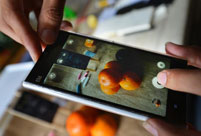 Sophomore sells fruit through WeChat in Shandong
Sophomore sells fruit through WeChat in Shandong Blockbuster? No, it’s firefighters’ posters
Blockbuster? No, it’s firefighters’ posters
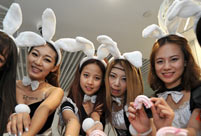 Special 'gifts' for IT men for Chinese Qixi Festival
Special 'gifts' for IT men for Chinese Qixi Festival
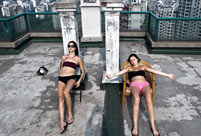 Foreign students' colorful life in China
Foreign students' colorful life in China
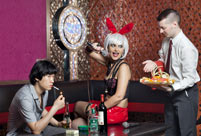 French photographer‘s work 'China 2050' goes viral online
French photographer‘s work 'China 2050' goes viral online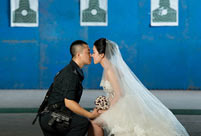 Dressed in uniforms to marry you
Dressed in uniforms to marry you
 Female soldier in Chinese special force
Female soldier in Chinese special force
 Zhujiang ambassadors attend lotus lanterns activity
Zhujiang ambassadors attend lotus lanterns activity
 From girly girl to tough special police officer
From girly girl to tough special police officer
 22-year-old veteran travels around China
22-year-old veteran travels around China
 Night scenery of pagoda forests
Night scenery of pagoda forests China suffers from hot summer
China suffers from hot summer 48 hours after super Typhoon Rammasun
48 hours after super Typhoon Rammasun German pianist plays mid-air ‘magic carpet’ show over Munich Airport
German pianist plays mid-air ‘magic carpet’ show over Munich Airport
 China's manned deep-sea submersible conducts dive in Pacific Ocean
China's manned deep-sea submersible conducts dive in Pacific Ocean
Day|Week|Month